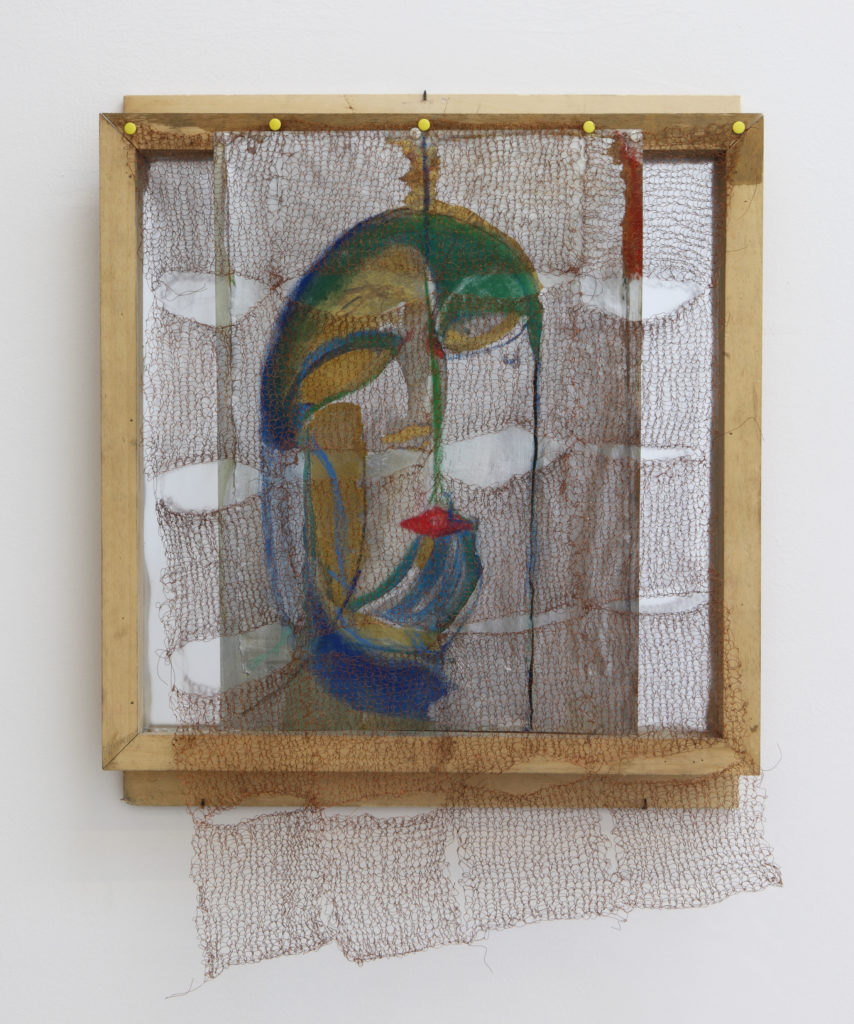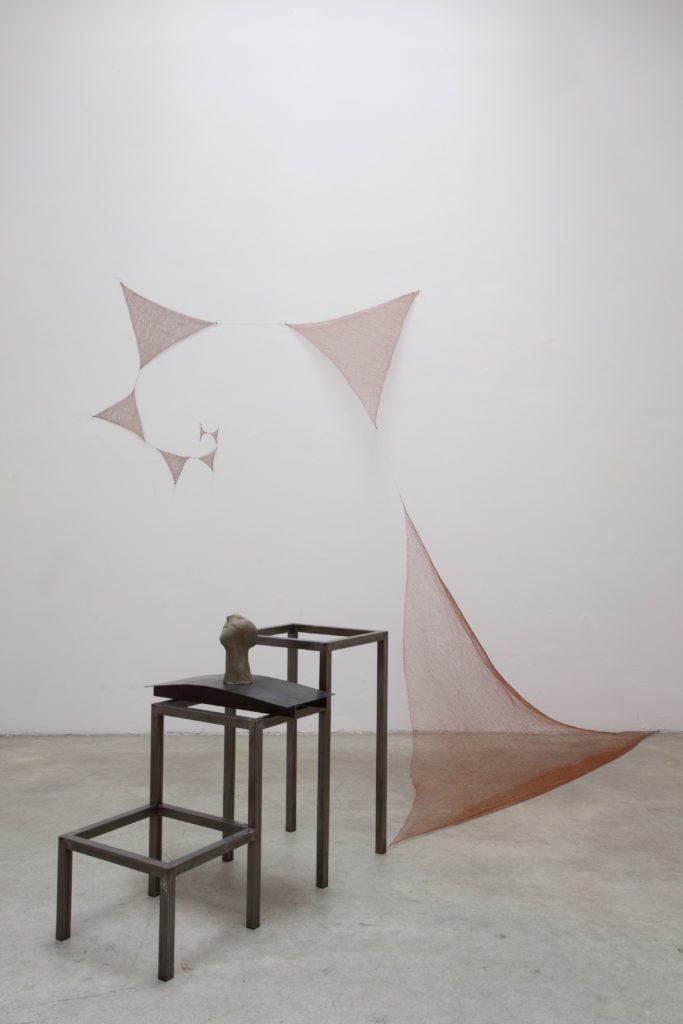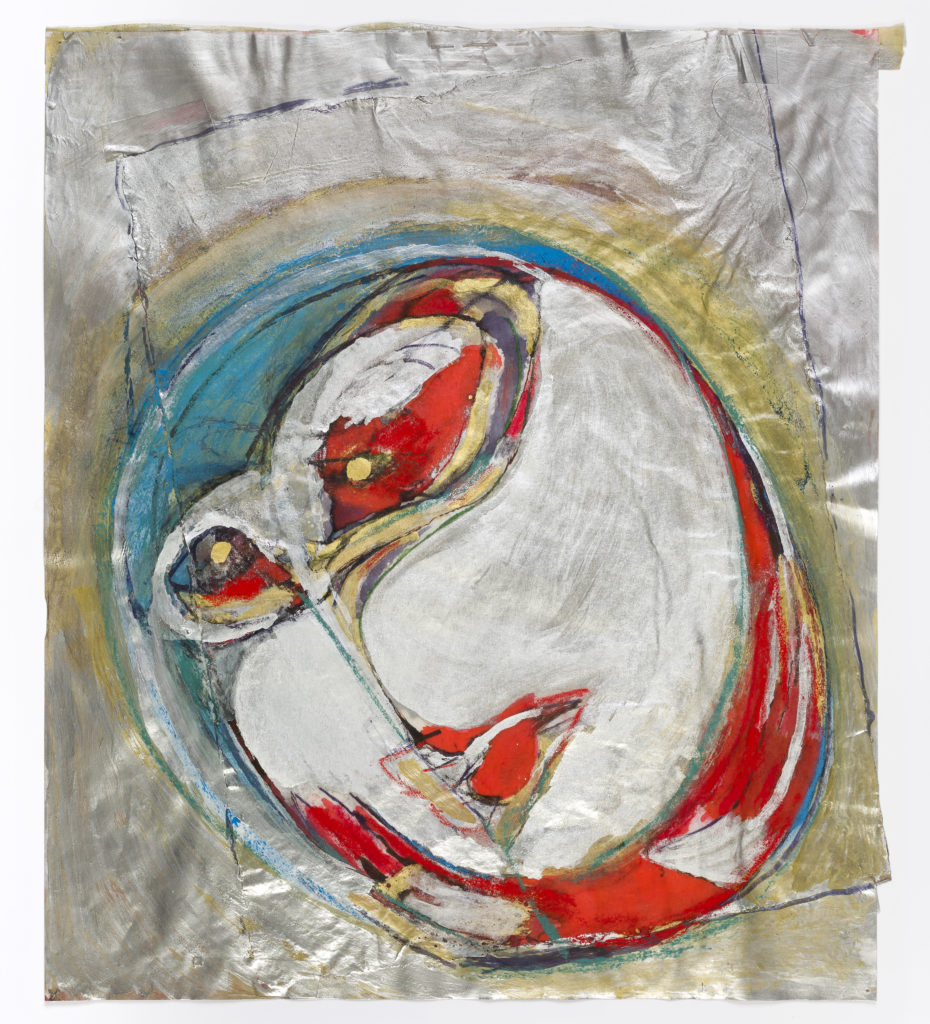On View
Marisa Merz Sets Her Sights for the Sky in New Met Breuer Exhibition
At 90 years old, she is still happily producing artwork at her home in Turin.

At 90 years old, she is still happily producing artwork at her home in Turin.

Katy Diamond Hamer

Italian artist Marisa Merz has a way of tapping into unidentified spirituality all her own. At 90 years old, she is still producing artwork at her studio in Turin.
There is a timeless quality to her oeuvre, one that is both relevant to Arte Povera—one of the most important Italian art movements, of which she was the sole female member—while also primal or Neolithic. In a new exhibition, The Sky Is A Great Space, on view at the Met Breuer, organized by Ian Alteveer, curator in the Met’s Department of Modern and Contemporary Art, and Connie Butler, chief curator of the Hammer Museum in Los Angeles, we get to view a selection of artworks from an oeuvre spanning 50 years.
Arte Povera artists often used materials such as wax, copper wire, gold leaf, untreated wood, and even water, and in The Sky Is A Great Space, Merz uses various mediums in both drawing and sculpture, taking liberties in her direct portrayal of the human body. This is evident in an Untitled work from 2004, a figure painted largely in gold on plywood installed on a copper shelf. Her work deals with literal conductors, such as copper, meant to transmit energy.
Arte Povera artists have always brought elements of nature into the white cube, and Marisa Merz is no different. “Arte Povera is tied to the Industrial Revolution and industrialization that happened in post-war Italy, the heart in Turin and Milan. At its inception it reacted not only to an attendant wealth but also one of rejection,” said Met curator Ian Alteveer, “hence the return to natural materials.”

Marisa Merz. Untitled (1993). Courtesy the artist and Fondazione Merz.
Unlike her male counterparts, Merz makes ethereal drawings and sculptures, which are both feminine and atemporal. Her figures, when drawn or painted are accessible, flat and close to the surface. Yet in sculptural manifestations, they become angular, and stripped of any identifying references placing them in a particular moment. Such could be said of Testa (Head), a sculpture dated between 1984-95 made of unfired clay, wax, tin, lead and placed on a steel table. The head is genderless and almost alien-like, but upon closer inspection an oval eye can be identified as a stemless spoon, immediately giving the viewer a sense of place, comfort, and sustenance.
Having a wealth of Renaissance art in her backyard, it’s not a stretch to think of some of Merz’s figures as spirits stripped of their religious symbolism. They become spiritual entities, born of a canon all her own. “She does talk about her angels, so there are glimpses into what the references are,” stated Hammer Curator Connie Butler. “It’s also important to say that she’s looking at art history through the collections that are in the museums in Turin.”

Marisa Merz, Untitled, undated clay works. Courtesy the artist and Fondazione Merz.
Although Merz does not identify as a feminist, the work she’s made throughout her career does employ, as Butler says, “a kind of feminist strategy.” She continues to make work in the home and while no longer knitting—a technique important in her earlier sculptures—has never renounced the female experience.
The earliest sculptures in the exhibition are a series of large-scale, aluminum Untitled (Living Sculptures) from the mid-1960s hanging from the ceiling. There is an entanglement of form—strips of twisted metal—that is both celebratory and ominous.
Alteveer shared that these works were initially installed in the artist’s kitchen, aligning the otherwise unruly shapes with a sense of domesticity. The sculptures appear to unravel and are ‘living’ as they spatially respond to the place where they happen to be installed. The metal, over time, has acquired a particularly matte patina and the shiniest of the trio, is on loan from the Galleria Civica d’Arte Moderna e Contemporanea, Turin.

Marisa Merz, Untitled, undated mixed media work. Courtesy the artist and Fondazione Merz.
“She has been excluded from certain exhibitions,” Alteveer said, “and when she’s had an intervention in a show, there are instances where her work wasn’t named. But regardless of the obstacles, Alteveer said, the strength of her paintings and sculptures are no longer up for dispute. “I’m always interested in work that…finds its way despite barricades built against it.”
Marisa Merz, The Sky Is A Great Space at the Met Breuer, is on view from January 24-May 7, 2017.